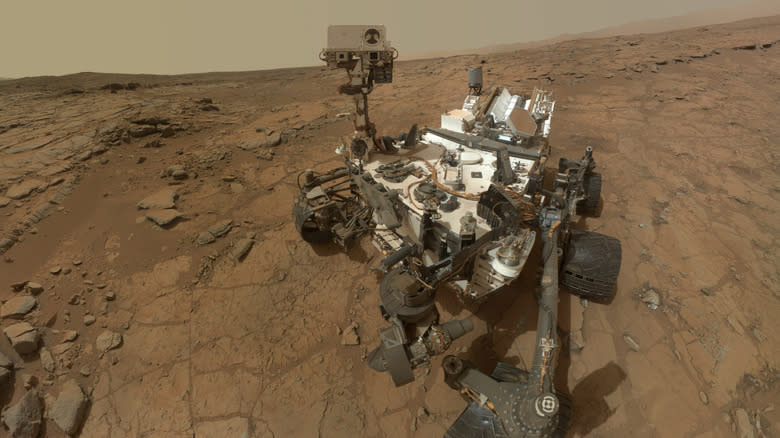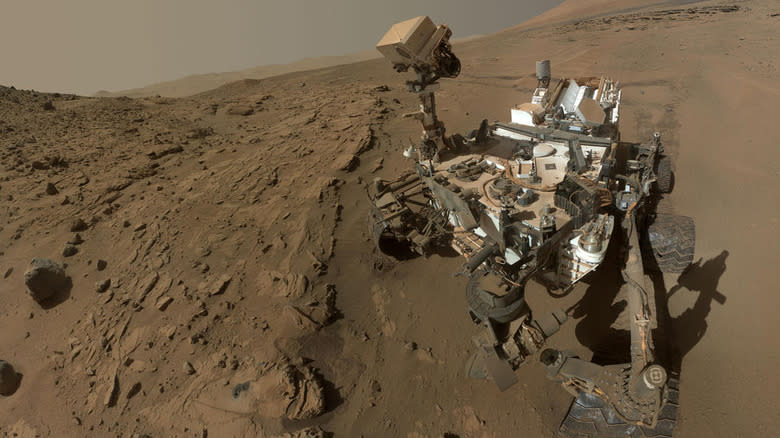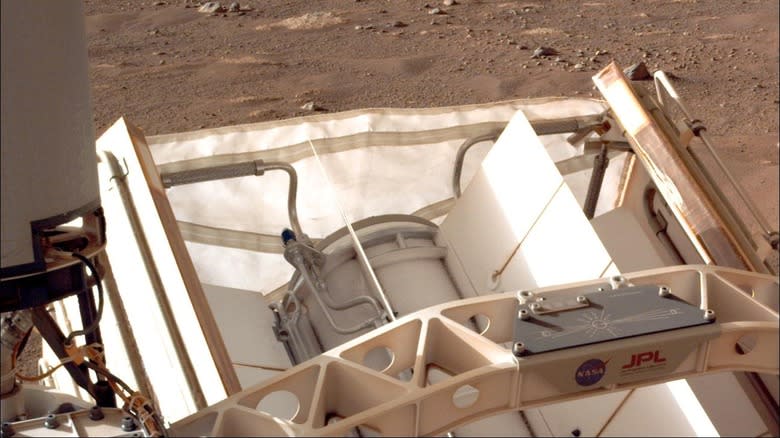
Happy 13th birthday to the Curiosity rover, which landed on Mars on August 6, 2012. Ah, I remember when I turned 13: just starting to shave, voice cracking like ice in spring, and learning how to multitask so that my tiny nuclear reactor would last longer. Sadly, Curiosity will never learn to shave, but it has just figured out how to do that last bit. After all this time in the dust of another planet, the rover is literally getting better.
NASA's Jet Propulsion Lab, which operates the Curiosity mission, has pushed a new software update to the six-wheeled adventurer. The main purpose is to improve the lifespan of its multi-mission radioisotope thermoelectric generator (MMRTG), which isn't a video game genre, but an advanced form of radioisotope power system (RPS). This is a miniaturized plutonium power plant, which is pretty amazing. Trouble is, even plutonium runs out eventually, and it's not like Curiosity can just pop over to the garage to pick some more up (and swap out its wheels while it's at it).
Every time Curiosity does anything at all, it uses electricity. Driving the wheels, scanning for a route, taking samples that one day should return to Earth, phoning home -- it all takes a little juice, and recharging the batteries means expending plutonium. Once it's all gone, Curiosity becomes a future Martian museum piece, nothing more. So making the seven-foot-tall guy more efficient is pretty critical, as it will extend the life of the MMRTG and, thus, Curiosity itself. How to do that? By doing what every 13-year-old juggling homework and social media does: multitask. And then take more naps.
Read more: Call Me A Luddite, But These Modern Features Only Seem To Make Cars Worse
The Quest For More Naps

Curiosity has a lot to do, but all of that is programmed by the good people back at JPL. So a day's mission might be, say, drive over there, take some photos, upload those photos back to Earth, then drive somewhere else. Each of those steps is planned out in sequence, and Curiosity fulfills them one at a time. Sensible, but also hugely inefficient.
So, crazy idea: what if Curiosity could upload the photos during the drive to the second location? That reduces the total amount of time Curiosity even has to be on to accomplish the mission, meaning less total power draw. This, critically, means more naps, a priority for us all.
In fact, before this update, the rover would do each of these tasks for an allotted amount of time, regardless of whether it accomplished the objective early. Maybe the drive was a bit smoother than estimated, and it arrived a little early. The old Curiosity would still serve out the scheduled time. The updated Curiosity can recognize when it's done its job for the day and then power down. The more power saved, the less the plutonium gets used up, the more years Curiosity will last.
The Miniaturized Nuclear Reactor

NASA has actually been using RTG systems since the 1960s. The Apollo missions used them, and the two Voyager spacecraft sailing off into the universe are still being powered by them today. The current version being used by Curiosity and its sibling Perseverance is "multi-mission," meaning the same design could be used in space or in atmosphere.
The main principle at work here is that if two conductive elements are at vastly different temperatures, electricity flows. Inside the device are plutonium pellets, which generate immense heat when desired. Outside the device, well, it's Mars! It's cold. You get the cold part for free. There's a reason this stuff is still working in the void of space. That allows for 110 watts from 10.6 pounds of plutonium to charge the rover's batteries.
The device itself is pretty sturdy, which it has to be, in case there's an accident. No one wants a science mission to turn into a dirty bomb. In fact, back in 1968, a rocket carrying a satellite with an RTG crashed into the sea. The generator was successfully recovered, intact and then reused on a future satellite.
How long will Curiosity's MMRTG last? As with all things on Mars, it's hard to predict. Maybe future updates will make it even more efficient; maybe something will go horribly wrong tomorrow. But when it first landed, NASA was only hoping the rover would make it two years. It just hit its 13th birthday. Here's to the next 13, buddy.
Want more like this? Join the Jalopnik newsletter to get the latest auto news sent straight to your inbox...
Read the original article on Jalopnik.






Comments